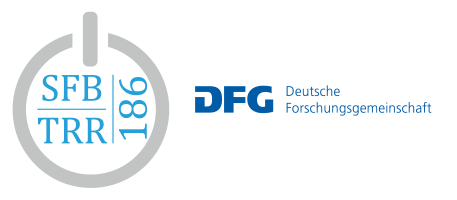High resolution analysis of active zone cytomatrix remodeling.
The presynaptic active zone (AZ) controls synaptic vesicle (SV) release and operates as a major signaling hub
for circuit- and behavior-level adaptations. At AZs, conserved scaffold cytomatrix protein architectures (“T-bars”
in Drosophila) control synaptic vesicle (SV) release, by defining the nanoscale distribution and density of the
voltage-gated Ca2+ channels (VGCCs). While AZs can potentiate their SV release in the minutes range, we
lack an understanding of how exactly the macromolecular architectures of AZs can switch into such a state of
functional potentiation. We thus in the last funding period explored the in vivo dynamics of individual Drosophila
Cav2-related, α1 voltage-gated Ca2+ channels called Cacophony (Cac) at AZs undergoing a homeostatic switch
over tens of minutes at Drosophila neuromuscular synapses, a model allowing for a unique combination of
genetic, microscopic, and physiological methods. We found that at potentiating AZs, the numbers of Cac
channels increased, while their mobility decreased, and the overall nanoscale distribution of the channels
became “compacted”. Same time, also the ELKS family scaffold protein Bruchpilot (BRP) distribution
underwent an extensive compaction, indicating that plasma membrane-adjacent parts of BRP and the Ca2+
channel intracellular C-term cooperate to drive sustained potentiation of SV release.
We now in the new funding period seek to further scrutinize the AZ remodeling process on the ultrastructural
and (macro)molecular level. Thus, we have teamed up in a new constellation, aiming to exploit the benefits of
(cryo-)electron tomography (cryo-ET), a technique that allows visualization of macromolecular structures in
situ in the context of its native cellular environment. We will use cryo-ET, in parallel to our successful ongoing
STED and live single molecule super-resolution fluorescence microscopy studies. In the proposed project, we
will combine our expertise to work towards an ultrastructural/molecular description of the Drosophila T-bar AZ
scaffold. We will thus attempt to perform cryo-ET of in situ T-bars under control and remodeling conditions. We
will combine these efforts with the detailed STED and single molecule super-resolution fluorescence
microscopy using AI-derived classifications to describe conformational states of a spectrum of epitopes. To
this end, we generated a collection of monoclonal intrabodies to densely and simultaneously label a set of
scaffold epitopes in order to arrive at a description of the macromolecular scaffold dynamics within the range
of a few nanometers.
Prof. Dr. Stephan Sigrist (FU Berlin)
Prof. Dr. Cristina Paulino (BZH Heidelberg), from 07/2024
Dr. Alexander M. Walter (FMP Berlin), until 06/2024
PD Dr. Carsten Schultz (EMBL Heidelberg), until 09/2019
